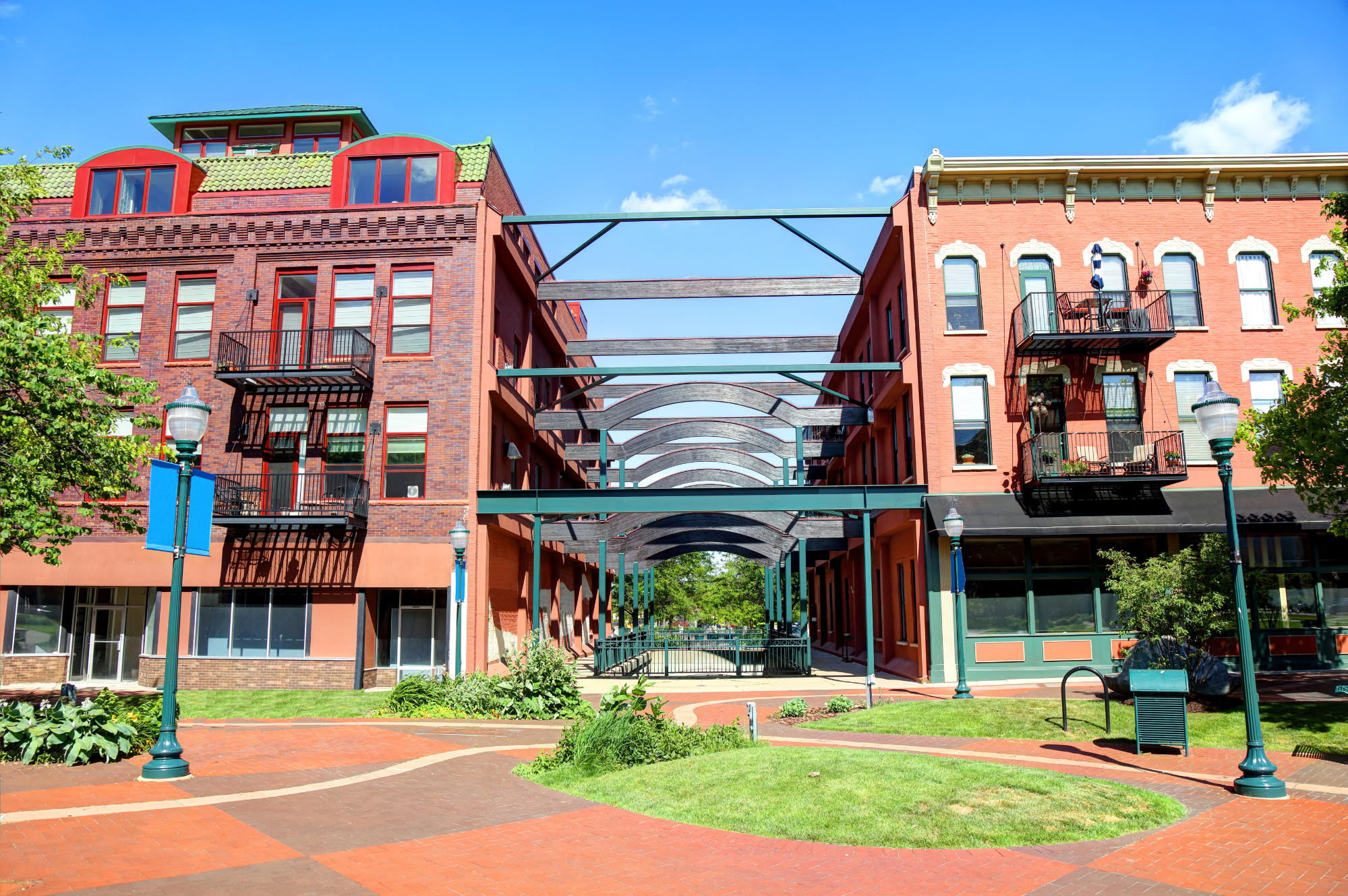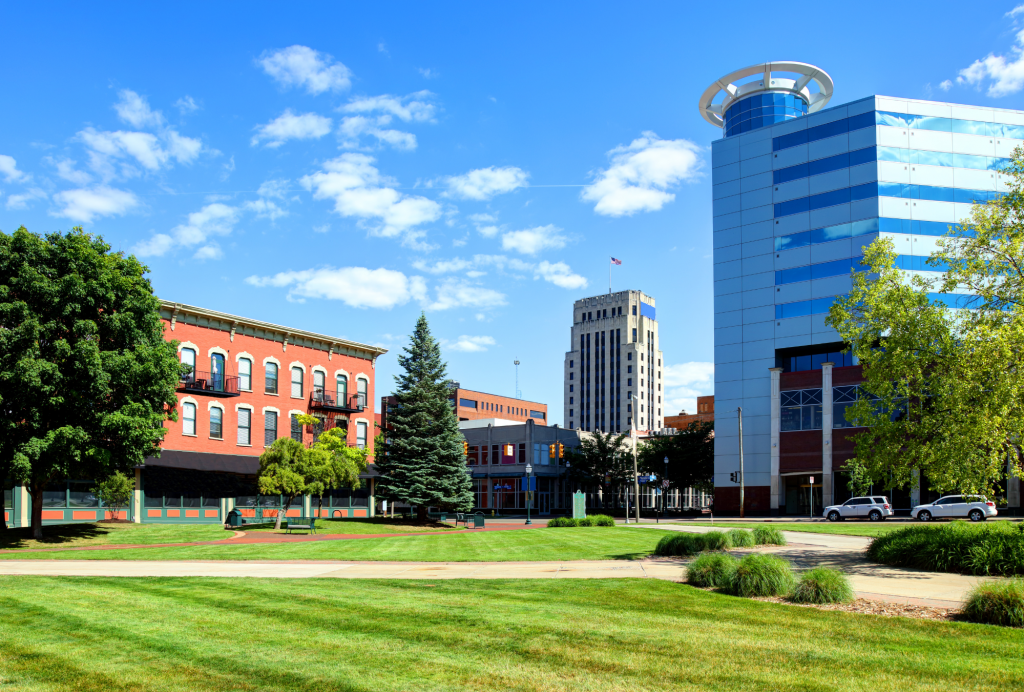
How Kalamazoo Became ‘Mall City’
Published on August 26, 2022
The Kalamazoo Mall is one of five stops on our free walking tour of downtown Kalamazoo. Learn more about its history and how it earned the moniker.
To learn more about this historic district, take the eATLAS tour Downtown Kalamazoo Historic Walking Tour, crafted by Discover Kalamazoo and featuring Richard Piet of The Richard Piet Show and Lynn Houghton, author, historian and curator of the Regional History Collections at Western Michigan University. They will guide you through historical stops downtown including Arcadia Creek, Bronson Park, The Marlborough, The Haymarket Building, and the Kalamazoo Mall. This tour is FREE for eATLAS users (https://eatlas.page.link/rvfyGYSM2WRx4MzQ8).
The growth of the suburbs after World War II affected cities of all sizes across America. Business naturally followed residents to their new communities. By the mid-1950s, enclosed shopping centers began dotting the streetscapes of the growing towns. To combat the economic damage of so many businesses moving to the suburbs, Kalamazoo, MI looked to the man who had helped create the modern suburban mall.
Victor Gruen was an Austrian architect who received his training at the Vienna Academy of Fine Arts. He moved to the U.S. in 1938 to escape the Nazis, and quickly established himself designing shops for retail—first in New York, then in Los Angeles. Gruen felt that the rising car culture in America, and the resulting combination of noise, pollution and increased isolation from one’s neighbors, was detrimental to society. He called it the “tyranny of the automobile.”
His solution was to develop a public space similar to the town center of his native Vienna, where pedestrians, public art and fountains filled the streets—instead of cars. Opened in 1954, Northland Mall in the Detroit suburb of Southfield featured 80 stores, a bank, post office and auditorium connected by an open-air center. Two years later, Southdale Center in Edina, MN took Northland one step further by putting everything under a roof, making it the first enclosed, climate-controlled shopping mall in America.
In 1957, Gruen turned his attention to downtown Kalamazoo, intending to revitalize the city and serve as a potential model for others. The 21-year plan, “Kalamazoo 1980,” called for the entire central business district to be closed to traffic. Access to the area would come via a new highway that circled downtown, with off-ramps heading directly to parking lots. Gruen felt that pedestrians being able to safely and freely roam the streets, without the noise of cars, would prove more conducive to shopping.

The City Commission approved the plan, and started by closing off the two blocks of S. Burdick St. between Water and South Streets. Fountains, benches and landscaping were added, with the city and local businesses sharing the cost of $60,000. On Aug. 19, 1959, 50,000 people, along with the Jimmy Dorsey Orchestra, witnessed the official opening of the Kalamazoo Mall.
It initially worked as well as could be expected. The first year saw retail sales and pedestrian traffic in the newly created plaza increase 25 and 30 percent, respectively. The mall was immediately expanded south by one block, to Lovell St., and Kalamazoo became known as “Mall City.” By 1960, more than 50 cities followed Kalamazoo’s lead and planned outdoor malls to spur their downtown renewal projects. Eventually, about 200 cities signed on to Gruen’s vision.
Even with the success, residents were skeptical about Gruen’s plan to transform the city. In 1963, they rejected a ballot initiative that would have funded the highway and parking lots. Over the next few years the mall began its decline, with residents complaining about shopping outside in inclement weather and the lack of nearby parking.
Furthermore, the mall could not prevent the exodus to the suburbs. Not even the 1975 addition of a fourth block—between Water and Eleanor Streets—could stop the decline. The writing was on the wall when in 1980, less than six miles from the Kalamazoo Mall, the Crossroads Mall in Portage, MI. Opened. It wasn’t long before downtown Kalamazoo met the same fate of drugs and crime that befell cities across the country.
In the mid-1990s, Kalamazoo introduced a 10-point plan to revitalize downtown, which included reopening the two blocks south of Michigan Ave. to traffic. Despite strong opposition, the plan was approved in 1997. A year later, a one-lane southbound street was constructed, with the reopening ceremony attended by Gov. John Engler and capped off by fireworks. A raffle was held to select the first citizen to drive down the street in nearly 40 years; and, the city had even brought in a big band to recreate Dorsey’s 1959 appearance.
It’s impossible to say that Kalamazoo Mall would have had long-term success if Gruen’s entire plan had come to fruition. Reed Kroloff, dean of the Illinois Institute of Technology’s College of Architecture, believes the “forces arrayed against the cities” were too great for Gruen to combat by simply closing off streets. “It was a good attempt,” he told WTTW, “it was an interesting attempt, but it could not compete…especially in these smaller cities where there just wasn’t enough…accumulation of things in the downtown area that weren’t simply shopping.”
However, Kroloff also noted that the decline of the suburban malls in the 21st century, coupled with the renaissance of urban shopping districts, shows that maybe things have come full circle.
“People aren’t enjoying the hermetic seal that a suburban shopping mall offers in the way that we were after World War II,” Kroloff continued. “We like the activity of a city.”
To learn more about this historic district, take the eATLAS tour Downtown Kalamazoo Historic Walking Tour, crafted by Discover Kalamazoo and featuring Richard Piet of The Richard Piet Show and Lynn Houghton, author, historian and curator of the Regional History Collections at Western Michigan University. They will guide you through historical stops downtown including Arcadia Creek, Bronson Park, The Marlborough, The Haymarket Building, and the Kalamazoo Mall. This tour is FREE for eATLAS users (https://eatlas.page.link/rvfyGYSM2WRx4MzQ8).

The Adventure starts when you say it does.
All eATLAS Adventures are designed and built by experienced eATLAS Whoa!Guides. They're always on. Always entertaining. And always ready to go.
Check out our Adventures!